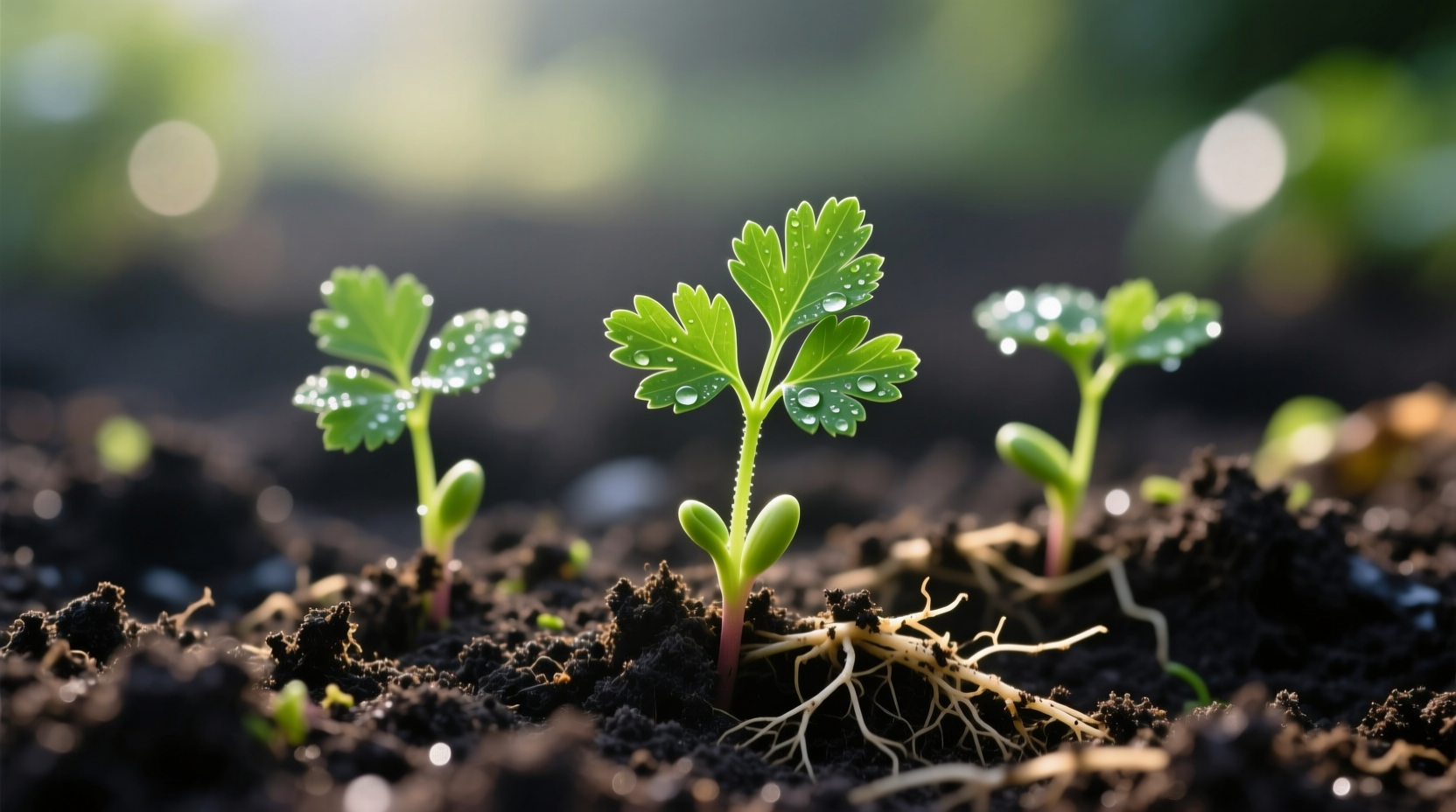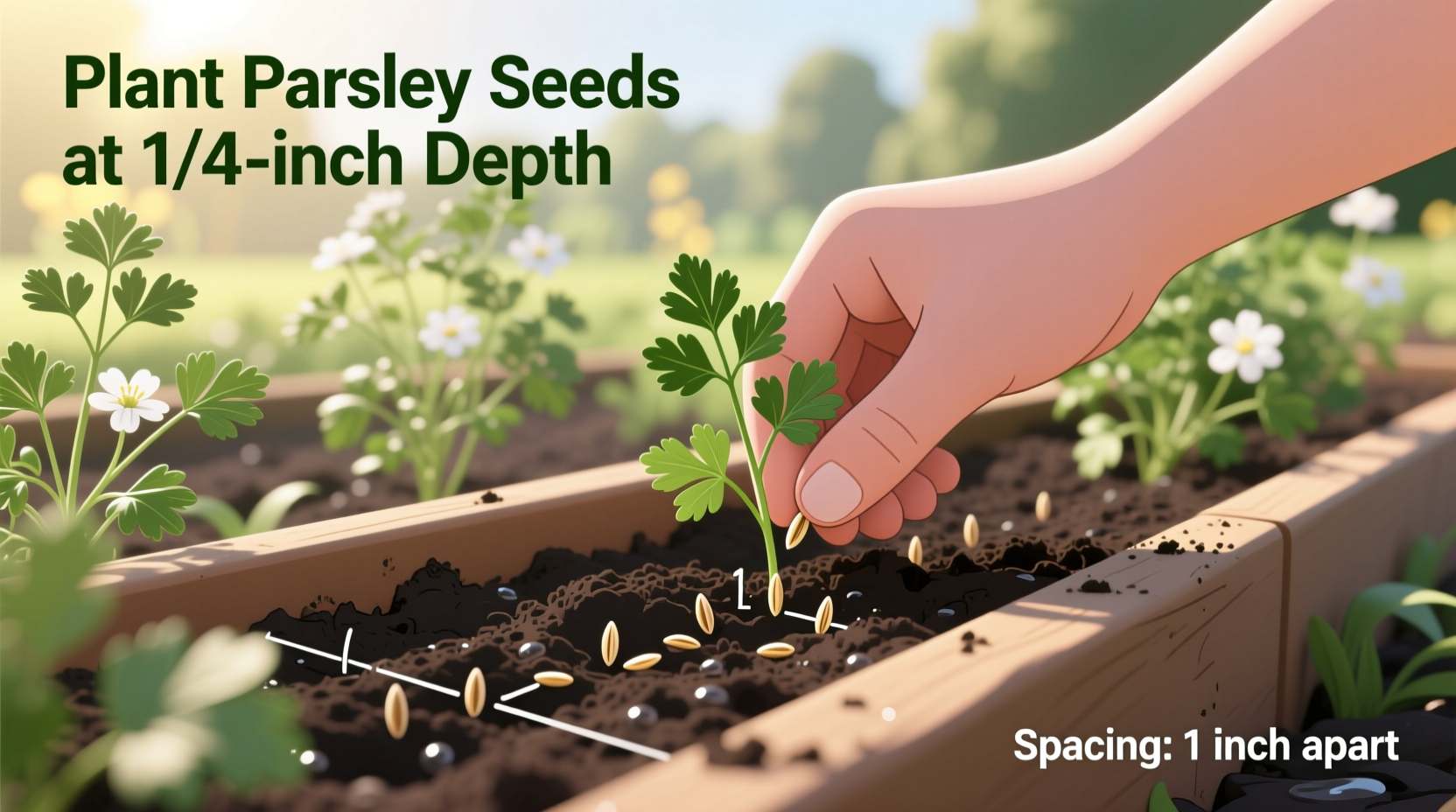Plant parsley successfully by starting seeds indoors 8-10 weeks before last frost or sowing directly outdoors when soil reaches 70°F (21°C). Use well-draining soil with pH 6.0-7.0, plant seeds 1/4 inch deep and 6-8 inches apart, and provide consistent moisture until germination (which takes 2-4 weeks). Mature plants need 6 hours of sunlight daily and 1-2 inches of water weekly for optimal growth.
Nothing beats the vibrant flavor of freshly harvested parsley in your dishes. Whether you're a beginner gardener or expanding your herb collection, growing parsley is one of the most rewarding and straightforward gardening projects you can undertake. This versatile herb enhances everything from tabbouleh to chimichurri, and with proper planting techniques, you'll enjoy abundant harvests throughout the growing season.
Why Grow Your Own Parsley?
Store-bought parsley often lacks the intense flavor and freshness of homegrown varieties. When you plant parsley yourself, you control the growing conditions, avoid pesticides, and can harvest exactly when needed for peak flavor. Plus, parsley attracts beneficial insects to your garden while repelling harmful pests like carrot flies.
Understanding Parsley Varieties
Before planting, choose between the two main types:
| Variety | Characteristics | Best For |
|---|---|---|
| Curly Parsley | Bright green, ruffled leaves; mild flavor | Garnishes, soups, stews |
| Italian (Flat-leaf) Parsley | Darker green, flat leaves; robust flavor | Cooking, sauces, Mediterranean dishes |
Italian parsley generally performs better in gardens with its stronger flavor and easier-to-clean leaves, while curly parsley makes an attractive border plant. Both varieties contain the same nutritional benefits, including high levels of vitamins K, C, and A.
Optimal Planting Timeline
Parsley's slow germination requires careful timing. According to the University of Minnesota Extension, the ideal planting schedule follows these guidelines:
- Indoor starting: 8-10 weeks before your last expected frost date
- Outdoor sowing: When soil temperature reaches 70°F (21°C)
- Transplanting outdoors: After last frost when seedlings have 3-4 true leaves
- Fall planting: 70-90 days before first expected frost for continuous harvest
For most regions, this means planting between March and May for spring crops. In warmer climates (zones 7+), you can plant in fall for winter harvests.
Step-by-Step Planting Process
Preparing Parsley Seeds
Parsley seeds have a notoriously slow germination rate due to their essential oil content. Improve success by:
- Soaking seeds in warm water for 24 hours before planting
- Using fresh seeds (older than 1 year have significantly lower germination rates)
- Planting 2-3 seeds per hole to ensure successful sprouting
Soil Preparation Essentials
Proper soil conditions determine your parsley's success. The Oregon State University Extension Service recommends these soil specifications:
- pH level: 6.0-7.0 (slightly acidic to neutral)
- Soil texture: Well-draining loam amended with 2-3 inches of compost
- Nutrient balance: Moderate nitrogen levels (too much promotes leaf growth at expense of flavor)
- Drainage: Critical - parsley won't tolerate waterlogged conditions
Planting Techniques

Follow these precise planting steps for optimal results:
- Create shallow furrows 1/4 inch deep (deeper planting inhibits germination)
- Space seeds 2-3 inches apart in rows 12 inches apart
- Cover lightly with soil and water gently
- Maintain consistent moisture (not soggy) until germination
- Thin seedlings to 6-8 inches apart when first true leaves appear
For container gardening, use pots at least 8 inches deep with drainage holes. Fill with quality potting mix and follow the same spacing guidelines.
Care and Maintenance Guide
Watering Requirements
Parsley needs consistent moisture but dislikes wet feet. The Penn State Extension notes that inconsistent watering causes bitter-tasting leaves. Follow this watering schedule:
- Seedlings: Keep soil consistently moist (not soggy)
- Mature plants: 1-2 inches of water weekly
- Check soil moisture: Water when top inch feels dry
- Avoid overhead watering to prevent fungal diseases
Sunlight and Temperature Needs
Parsley thrives in:
- Full sun (6+ hours daily) in cooler climates
- Partial shade (especially afternoon shade) in hot climates
- Optimal temperature range: 60-80°F (15-27°C)
- Frost tolerance: Survives light frosts but dies back in hard freezes
Fertilizing Strategy
Over-fertilizing reduces flavor intensity. Apply these guidelines:
- At planting: Mix balanced organic fertilizer (5-5-5) into soil
- Mid-season: Side-dress with compost or fish emulsion
- Avoid high-nitrogen fertilizers which promote excessive leaf growth with diminished flavor
- Container plants: Feed monthly with diluted liquid fertilizer
Troubleshooting Common Problems
Slow or Failed Germination
Parsley seeds can take 2-4 weeks to sprout. If germination fails:
- Check seed viability (older seeds have lower germination rates)
- Ensure consistent moisture during germination period
- Verify soil temperature is between 60-85°F (15-29°C)
- Avoid planting too deeply (max 1/4 inch)
Yellowing Leaves
Common causes and solutions:
- Overwatering: Allow soil to dry slightly between waterings
- Nutrient deficiency: Apply balanced fertilizer
- Pests: Inspect for aphids or spider mites
- Natural aging: Older leaves naturally yellow - simply harvest and use them
Harvesting and Storage Techniques
When and How to Harvest
Harvest parsley at its flavor peak:
- First harvest: When plants have 10+ leaves (about 70-90 days after planting)
- Best time: Morning after dew has dried
- Method: Cut outer stems at soil level, never remove more than 1/3 of plant at once
- Frequency: Harvest every 2-3 weeks for continuous production
Preserving Your Harvest
Extend your parsley's shelf life with these methods:
- Refrigeration: Store in airtight container with damp paper towel for 1-2 weeks
- Freezing: Chop and freeze in ice cube trays with water or oil
- Drying: Hang small bunches upside down in a dark, well-ventilated area
- Herb oil: Blend with olive oil and freeze in portions
Seasonal Care Calendar
Follow this seasonal maintenance schedule for year-round success:
| Season | Key Tasks | Pro Tips |
|---|---|---|
| Spring | Start seeds indoors, transplant after last frost | Soak seeds 24h before planting to speed germination |
| Summer | Water regularly, harvest outer stems, watch for pests | Provide afternoon shade in hot climates to prevent bolting |
| Fall | Plant new crop for winter harvest, mulch established plants | Mulch with straw to extend harvest through light frosts |
| Winter | Harvest as needed in mild climates, protect from hard freezes | Grow indoors in containers near sunny window for year-round supply |
By following these comprehensive planting guidelines, you'll enjoy a continuous supply of fresh parsley that elevates your culinary creations with vibrant flavor and color. Remember that patience is key with parsley - its slow start leads to a long, productive harvest period that makes the wait worthwhile.











 浙公网安备
33010002000092号
浙公网安备
33010002000092号 浙B2-20120091-4
浙B2-20120091-4